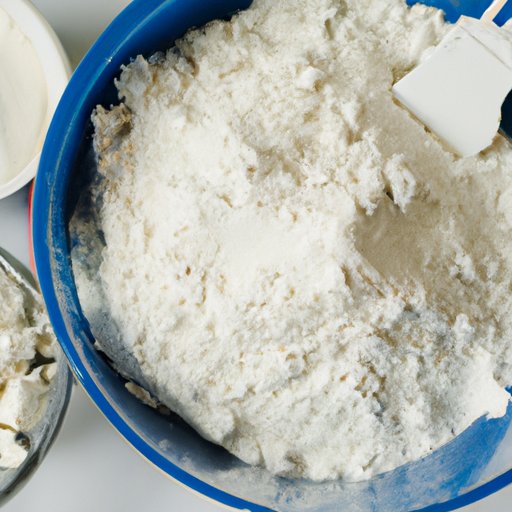Introduction
Have you ever been in the middle of baking a recipe only to realize that you have no idea how many grams are in a cup of flour? Don’t worry, you’re not alone! It can be frustrating and confusing to navigate the world of baking measurements, but this article is here to help. In this comprehensive guide, we’ll explore how many grams are in a cup of flour, as well as variations in weight per cup for different types of flour. We’ll also discuss the importance of accurate measurements in baking, and provide practical tips for measuring flour correctly.
Basic Guide to Measuring Flour
When it comes to measuring flour, the most common measurement you’ll see is the cup. However, different types of flour can have different weights per cup. For all-purpose flour, one cup usually weighs around 125 grams. Whole wheat flour, on the other hand, is denser and may weigh slightly more – around 130 to 135 grams per cup.
It’s important to note that measuring flour accurately is crucial to the success of your baking. Too much flour can result in dry and crumbly baked goods, while too little flour can make them dense and doughy. To ensure accuracy, it’s best to measure flour by weight rather than volume whenever possible. However, if you don’t have a kitchen scale, measuring cups and spoons can still be used as long as they are used correctly.
Variations in Weight per Cup of Different Flour Types
As mentioned earlier, different types of flour can have different weights per cup. Here’s a table to give you an idea of the variations:
| Flour Type | Weight Per Cup (in grams) |
|---|---|
| All-Purpose Flour | 125 |
| Bread Flour | 135 |
| Whole Wheat Flour | 130-135 |
| Cake Flour | 115 |
Weight vs Volume in Baking
While volume measurements (such as cups and tablespoons) are the most common in baking recipes, weight measurements can often be more accurate. This is especially true when it comes to flour, as it can be easily compressed or packed down, resulting in different amounts per cup.
If a recipe only provides volume measurements, you can convert it to weight by using a kitchen scale. Simply weigh out the amount of flour the recipe calls for in grams and use that measurement instead of the volume measurement.
Top Tips for Measuring Flour Accurately
Here are a few tips to help ensure accurate measurements when measuring flour:
- Avoid scooping flour directly from the container, as this can compress it and result in too much flour. Instead, fluff the flour with a fork or whisk before scooping it into the measuring cup.
- Use a spoon to fill the measuring cup with flour, then level off the top with a straight edge (like a knife or spatula).
- Consider investing in a kitchen scale to measure flour by weight, especially if you bake frequently.
By measuring flour accurately, you’ll ensure that your baked goods come out with the right texture and taste every time.
Measuring Flour in Metric Units
If you live in a country that uses the metric system, you may be more comfortable measuring in grams rather than cups. To convert cups to grams, here are the weights per cup for several common types of flour:
| Flour Type | Weight Per Cup (in grams) |
|---|---|
| All-Purpose Flour | 125 |
| Bread Flour | 135 |
| Whole Wheat Flour | 130-135 |
| Cake Flour | 115 |
To measure flour in grams, simply weigh out the desired amount on a kitchen scale.
Conclusion
Measuring flour accurately is an essential part of successful baking. By understanding how many grams are in a cup of flour and how different types of flour can have varying weights per cup, you can ensure that your baked goods come out perfect every time. Remember to use a kitchen scale whenever possible for the most accurate measurements, and follow the tips provided in this article to measure flour correctly.
